Visitors traveled to the 1893 World’s Fair by train, boat, carriage, horse, bicycle, and even by foot (sometimes very long distances). Below is an annotated excerpt from “Going to the Fair” in the June 1893 issue of Current Literature, in which the author describes the route to travel by yacht from New York to the World’s Columbian Exposition in Chicago.
“The Water Route”
Certainly for the man who owns a boat capable of making the journey, no more delightful trip can be conceived than to sail through the Sound, stop off at Newport, coast along Massachusetts and Maine shores, and view the glories of the St. Lawrence from the deck of your own boat.
Steam-yachts can reach Montreal under their own power; but after leaving Quebec, sailing yachts must proceed under tow to Montreal. Towage from Quebec to Montreal and return will range from $200 to $400, according to the size of the vessel. The route is perfectly clear of all obstructions, and therefore there need be no lowering of masts and funnels. Passage through the canals for yachts going and returning from the Fair will be free, as the Dominion government has passed an order in Council exempting all such vessels from payment of tolls in canals.
NOTE: These stated towage fees of $200 to $400 in 1893 dollars is roughly equivalent to $5000 to $10,000 today!
At Montreal you enter Lachine Canal, proceeding under tow or steam, as the case may be, as far as Lachine. Thence into Lake Erie, the most shallow, tempestuous, and treacherous of all the lakes. From Lake Erie you enter the Detroit River, thence to Lake St. Clair and St. Clair River, from which you sail into Lake Huron.
NOTE: The Lachine Canal runs 14 km (9 miles) through the southwest part of the Island of Montreal, from the Old Port of Montreal to Lake Saint-Louis.
NOTE: The author neglects to describe how yachts would pass from Lake Ontario, past Niagara Falls, to reach Lake Erie.
From there on it is plain sailing through the Strait of Mackinac into Lake Michigan, and thence to the gates of the “Windy City.”
NOTE: The origin of Chicago’s “Windy City” moniker is often attributed to an editorial by Charles Dana in the New York Sun circa 1890. Ridiculing boisterous Chicago politicians, Dana allegedly wrote: “Don’t pay any attention to the nonsensical claims of that windy city. Its people could not build a World’s Fair even if they won it.” The editorial has not been found, and other uses of the expression “Windy City” pre-dating the 1893 World’s Fair are known. In the context of this article, we might assume the author is referring the lakefront breeze rather than gasbag politicians.
These possibilities apply to yachts not greater in length than one hundred and eighty-three feet, twenty-eight feet beam, and fourteen feet draught. Other vessels of greater draught have passed the canals by using pontoons and “camels.”
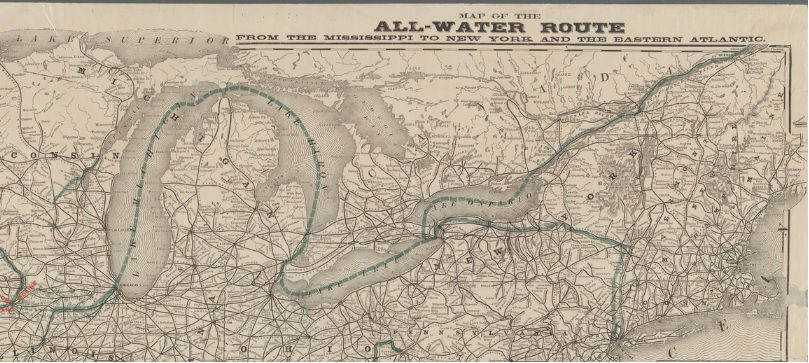
Water route connecting New York and Chicago c. 1885. [Image from the New York Public Library Digital Collections.]
This accompanying piece, from the December 1892 issue of World’s Columbian Exposition Illustrated, announces toll-free yachting to the Fair.
“No Tolls for World’s Fair Yachts”
Robert Rae, Commodore of the Chicago Yacht Club, has received from the Minister of Railways and Canals, Dominion of Canada, the following dispatch:
“I have the honor to inform you that on the authority of an order of Council, dated November 2, free passes will be extended through Dominion canals to all pleasure yachts attending the Columbian Exposition. This, I believe, is in accordance with your request.
T. TRUDEAU, Acting Secretary.”
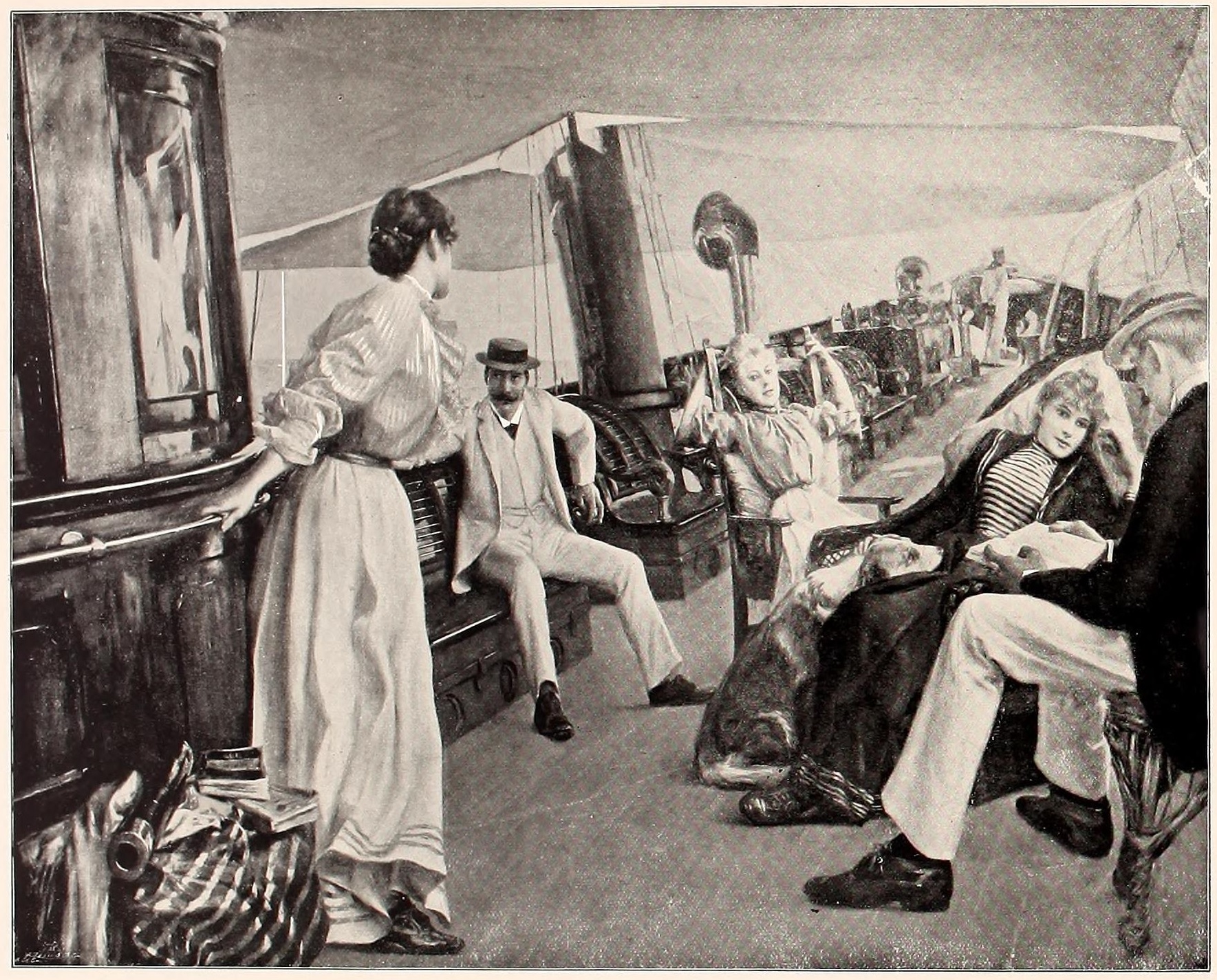
“On the Yacht Namouna, Venice” an 1890 painting by Jules Stewart exhibited in the U.S. section of the Palace of Fine Arts at the 1893 World’s Fair. [Image from Dream City. A Portfolio of Photographic Views of the World’s Columbian Exposition. N. D. Thompson, 1893.]
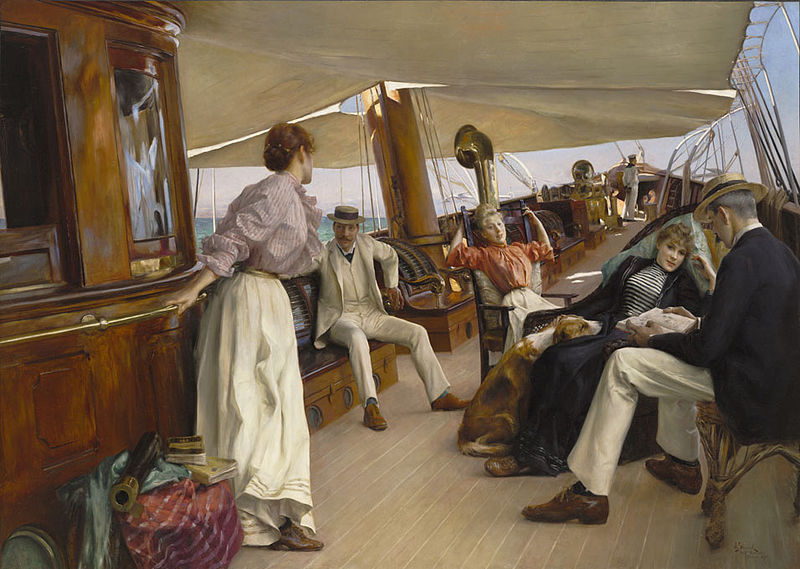
“On the Yacht Namouna, Venice” now resides in the collection of the Wadsworth Atheneum Museum of Art in Hartford, Connecticut.

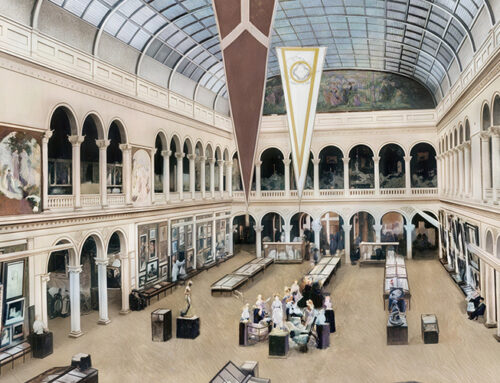
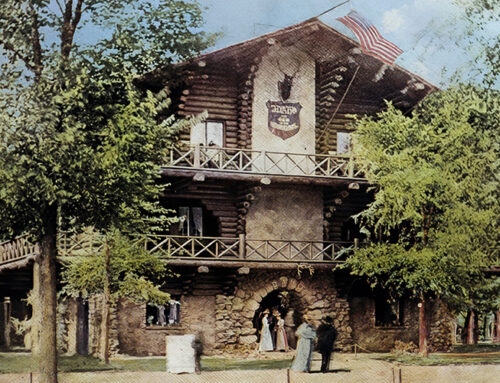
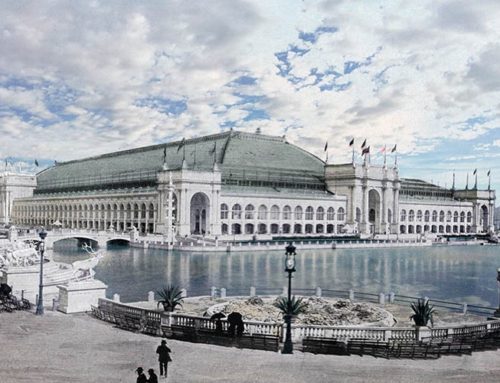
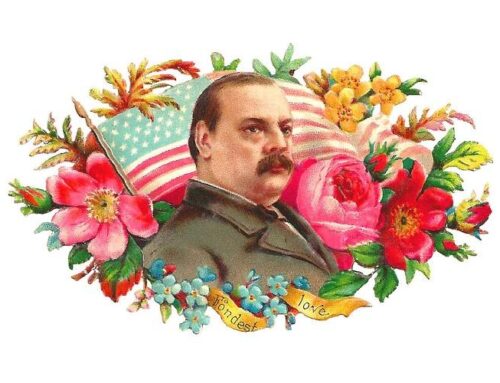
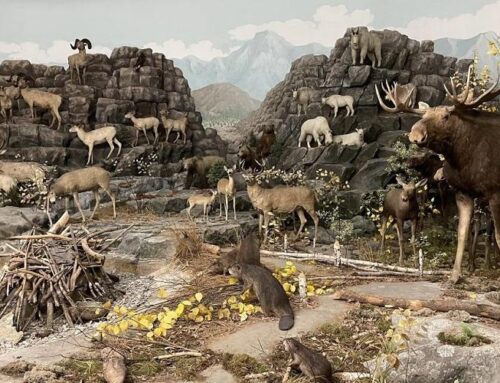
Leave A Comment